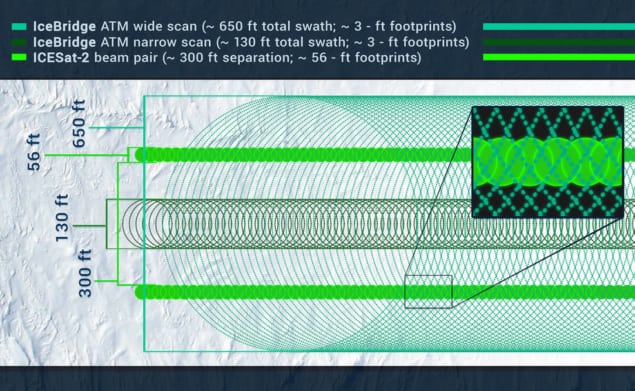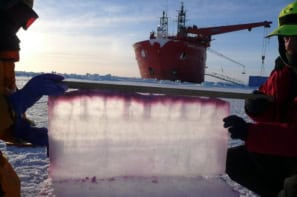On 16 October NASA scientist Jeremy Harbeck was on a flight heading towards A68, the iceberg with a surface area of 5800 sq km that split from the Larsen C ice shelf in the Antarctic Peninsula in July 2017. En route, he snapped a photo of a much smaller iceberg that was unusually regular in shape. And that photo has garnered more than 17,000 likes and 8000 retweets on Twitter.
From yesterday's #IceBridge flight: A tabular iceberg can be seen on the right, floating among sea ice just off of the Larsen C ice shelf. The iceberg's sharp angles and flat surface indicate that it probably recently calved from the ice shelf. pic.twitter.com/XhgTrf642Z
— NASA ICE (@NASA_ICE) October 17, 2018
“I was actually more interested in capturing the A68 iceberg that we were about to fly over, but I thought this rectangular iceberg was visually interesting and fairly photogenic, so on a lark, I just took a couple photos,” says Harbeck.“ I often see icebergs with relatively straight edges, but I’ve not really seen one before with two corners at such right angles like this one had.”
The flight was part of a five-week long aerial survey of sea and land ice for Operation IceBridge. Launched in 2009, the same year that the original ICESat (Ice, Cloud and land Elevation Satellite) mission ended, IceBridge aims to maintain continuity of laser-altimetry measurements between ICESat missions. This year flights follow the orbits of ICESat-2, which launched in September, enabling scientists to compare the measurements from air and space.

“After a decade of flying both poles every year, we’re finally bridging the two ICESat satellite missions,” says Joe MacGregor of NASA’s Goddard Space Flight Center, US, who is IceBridge project scientist. “It’s hugely satisfying to be part of building this key observational record of change in the polar regions. This campaign is our second-to-last Antarctic campaign and it is arguably the most scientifically diverse that IceBridge has ever done.”
The campaign, according to MacGregor, will revisit classic IceBridge targets such as flights along glacier flowlines that have been surveyed since 2002 and long-term sea ice flights, as well as new targets across West Antarctica. “More than two dozen of these mission designs are relevant to both IceBridge and ICESat-2,” he adds.



